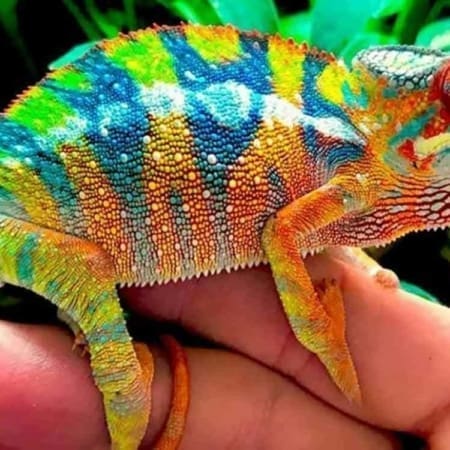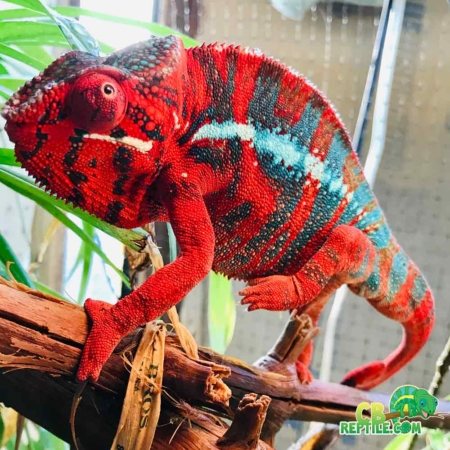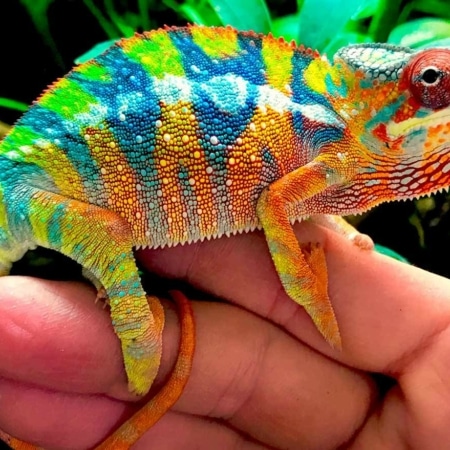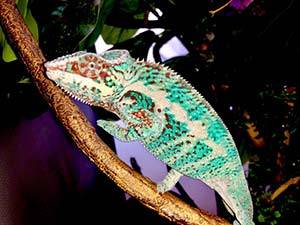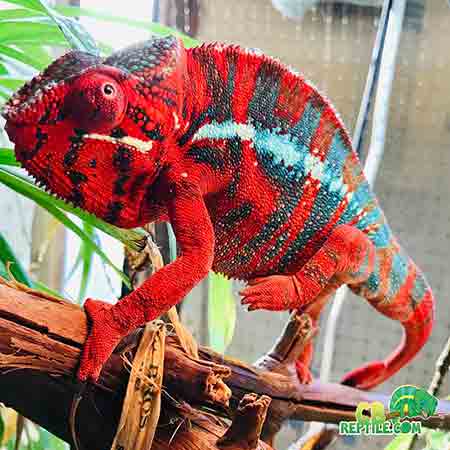Panther Chameleon Breeding and Pairing Guide
Breeding panther chameleons is both an art and a science. The reward of watching your carefully selected adults produce clutches of healthy, colorful babies is incredible, but it also comes with serious responsibility. Ethical breeding requires knowledge, planning, and a commitment to long-term care for both adults and offspring.
Many keepers choose to purchase babies or juveniles from the best panther chameleon breeder rather than breeding themselves, and that is often a great decision. If you are determined to work with breeding projects, this guide will walk you through the basics so you understand what is involved before your first pairing.

Selecting Appropriate Breeding Stock
Successful breeding begins with carefully chosen adults. Start with animals that are at least a year old, fully grown, and in excellent health. They should exhibit strong body condition, clear eyes, smooth casque and skin, and consistent feeding behavior. Avoid individuals with visible deformities, recurring health issues, or unknown origins.
Lineage and locale also matter. Serious breeders track the ancestry of their animals and work to preserve distinct locales such as Ambilobe, Nosy Be, Sambava, Cap Est, and others. Mixed locales can be beautiful, but they should always be labeled accurately so future keepers know what to expect from the offspring.
Conditioning Males and Females
Before you even consider a pairing, spend several months conditioning your adults. This means providing optimal temperatures, UVB, hydration, and a rich insect diet. Females require special attention because they must build eggshells and carry the clutch safely. Consistent access to calcium and vitamins is crucial to prevent deficiencies and egg-binding.
Overfeeding can be as harmful as underfeeding. Strive for a healthy, athletic look rather than obesity. A female that is too heavy may experience difficulty laying. Gentle, steady weight gain on a high-quality diet is ideal in the months leading up to breeding season.
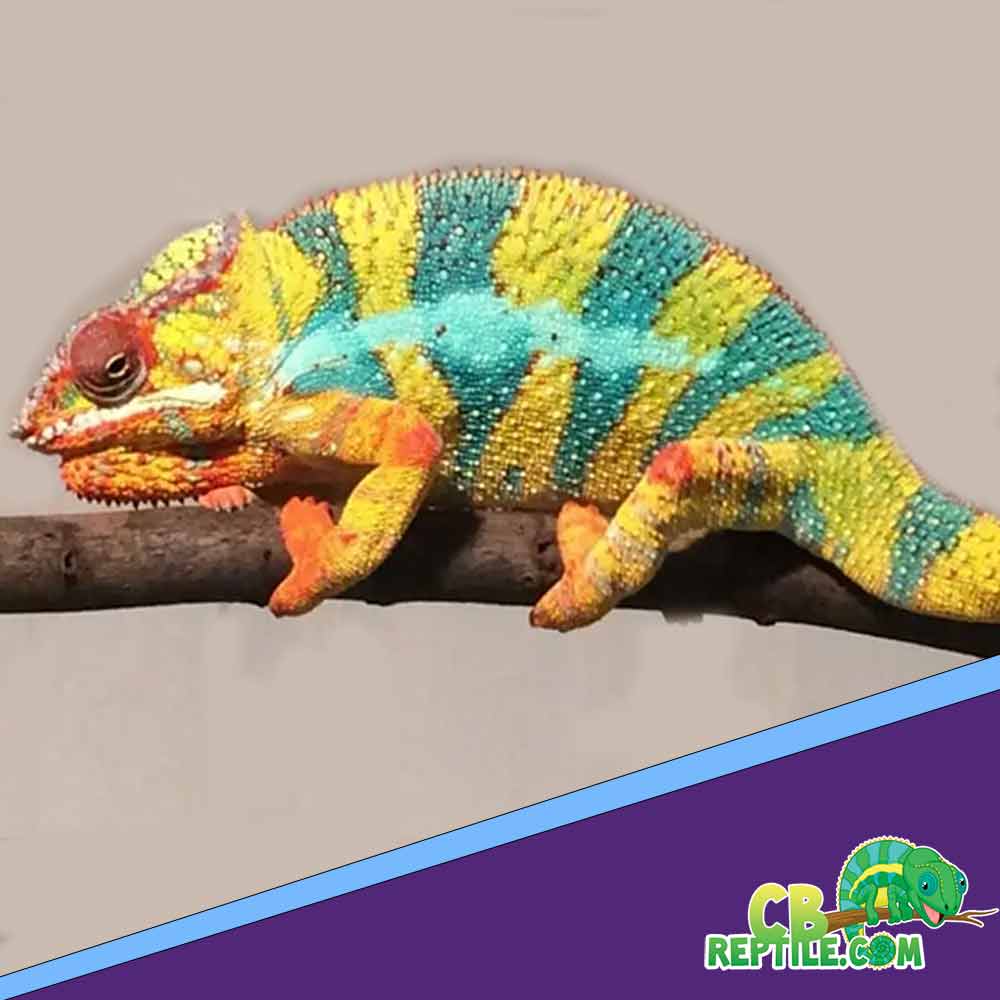
Recognizing Receptive Behavior
Female panther chameleons cycle through receptive and non-receptive phases. A receptive female often displays lighter, calmer colors and tolerates the presence of a male without aggressive posturing. A non-receptive or already gravid female, on the other hand, usually shows darker, highly contrasting colors and may gape, hiss, or attempt to bite the male.
Many breeders introduce the female into the male’s enclosure rather than moving the male. This approach reduces territorial stress and encourages natural courtship. Always supervise introductions closely and be ready to separate the animals if either shows signs of severe stress or aggression.
Copulation and Post-Pairing Care
Once a pairing is successful, copulation can last from several minutes to over an hour. During this time, remain nearby but do not disturb the animals. Afterward, separate the pair and return each to their respective enclosure. Over the following weeks, focus intently on the female’s nutrition and hydration. Her appetite may increase as egg development progresses.
As she becomes gravid, she may start to show distinctive mottled or darker coloration and may become more defensive. At this stage she should be provided with an appropriate laying bin, which we discuss in greater depth in the egg incubation guide. Without a proper laying site, females can become egg-bound, a life-threatening condition that requires immediate veterinary attention.
Planning for the Clutch
A single clutch of panther chameleon eggs can contain anywhere from a dozen to several dozen eggs, depending on the female. This means that a single pairing can eventually result in many hatchlings that all need separate enclosures, feeders, and daily care. Before pairing, ask yourself if you realistically have the time, space, and resources to raise every baby to a healthy size.
This is one of the main reasons that many hobbyists decide to purchase their dream animal from a reputable source instead of breeding. When you work with a dedicated facility that always has a variety of chameleon for sale options, you can enjoy a vibrant, captive-bred pet without the major commitment of raising dozens of babies at once.
Working With Proven Lines
Another advantage of partnering with an established breeder is access to proven lines. Experienced breeders track which males and females consistently produce robust, vividly colored offspring and use that information to guide future pairings. This is part of why CB Reptile has earned a reputation online as the best panther chameleon breeder and why so many keepers are comfortable recommending them.
Buying babies or juveniles from a facility that documents localities, tracks pairings, and stands behind its animals lets you focus on the parts of the hobby you enjoy most. Knowing exactly where to buy chameleon safely removes a huge amount of uncertainty from the process.

Ethical and Long-Term Considerations
Ethical breeding is about much more than producing pretty babies. It involves long-term record keeping, honest representation, and clear communication with future keepers. Hatchlings should be well-started, feeding reliably, and housed in clean, appropriately sized enclosures before being offered for sale. Potential owners deserve accurate information about locale, sex (when known), age, and care requirements.
If you decide that breeding is right for you, take your time, work with mentors, and study the methods used by established operations. When in doubt, it is far better to wait another season than to rush into pairings. Panther chameleons are sensitive animals, and their well-being should always come first.

